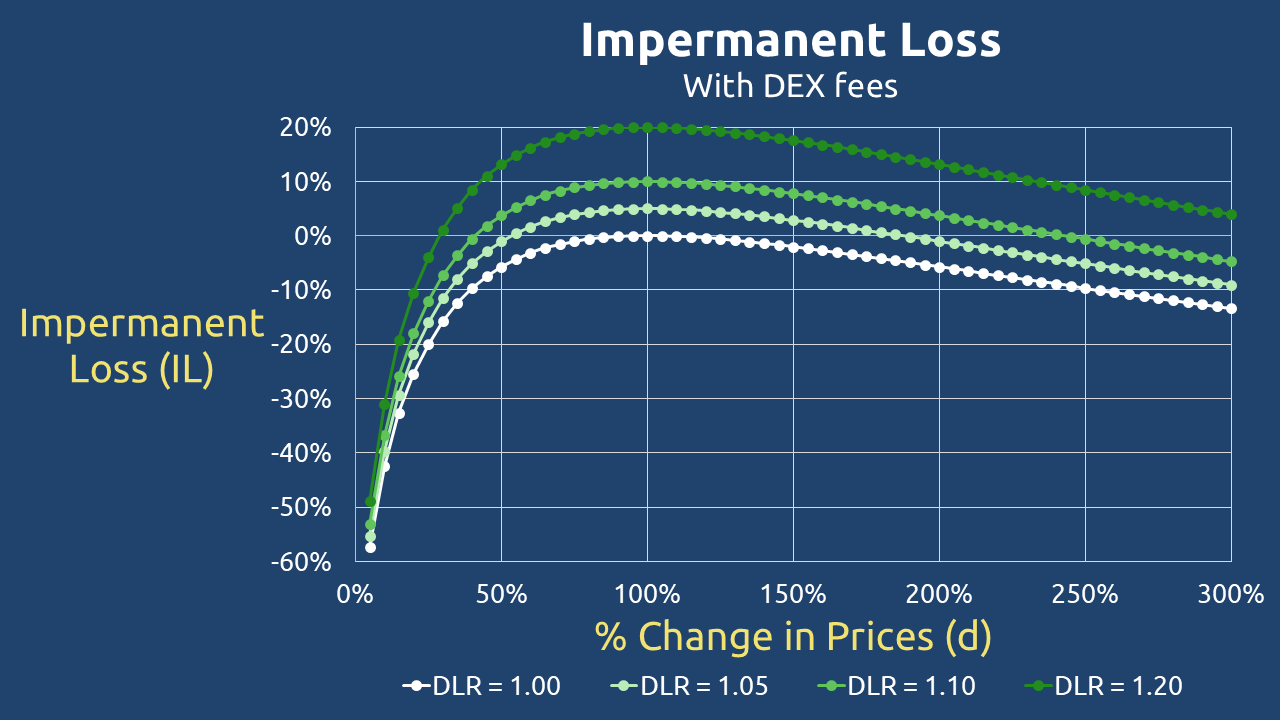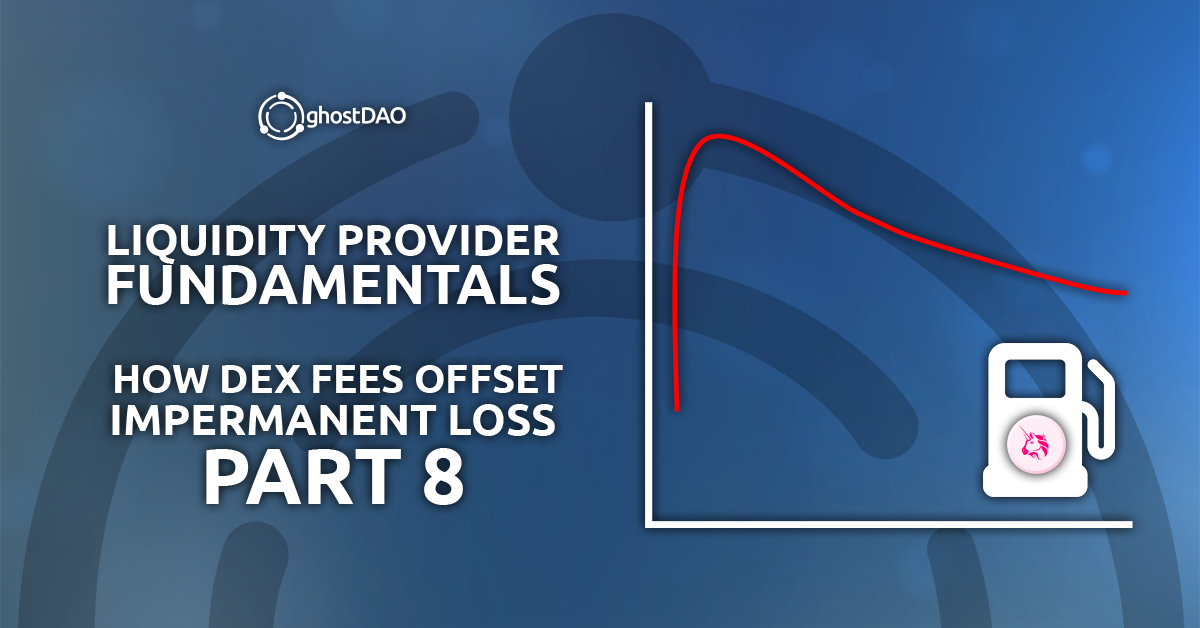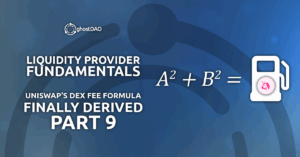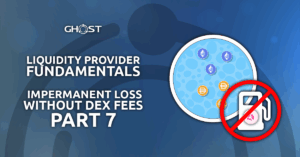We now arrive at a crucial concept: how DEX trading fees compensate for Impermanent Loss (IL). While most sources vaguely mention this relationship, few explain the exact mechanics.
Let’s revisit our previous IL formula:
Now, we’ll adjust for price changes (d) and DEX fees.
Price Ratio (d) with DEX Fees
Define d as the price change ratio:
From this, we derive:
Multiply both sides by :
Since DEX fees increase k (without liquidity additions/withdrawals, only swaps), we use:
Substituting k1 and k2:
Solving for :
Plugging back into the IL equation:
Key Implications:
- If no swaps occur,
- If swaps occur,
(fees accumulate)
- The term
(DEX Liquidity Ratio, DLR) reduces IL impact
Numerical Examples: IL vs. DEX Fees
Define DLR (DEX Liquidity Ratio):

When DLR = 1.05
- d = 25% (Token X drops by 75%) → IL = -16.0%
- d = 50% (Token X drops by 50%) → IL = -1.0%
- d = 75% (Token X drops by 25%) → IL = 3.9%
- d = 125% (Token X rises by 25%) → IL = 4.3%
- d = 150% (Token X rises by 50%) → IL = 2.9%
- d = 200% (Token X rises by 100%) → IL = -1.0%
- d = 300% (Token X rises by 200%) → IL = -9.1%
✅ Profit Zone: d = 53% to 188%
When DLR = 1.10
- d = 25% (Token X drops by 75%) → IL = -12.0%
- d = 50% (Token X drops by 50%) → IL = 3.7%
- d = 75% (Token X drops by 25%) → IL = 8.9%
- d = 125% (Token X rises by 25%) → IL = 9.3%
- d = 150% (Token X rises by 50%) → IL = 7.8%
- d = 200% (Token X rises by 100%) → IL = 3.7%
- d = 300% (Token X rises by 200%) → IL = -4.7%
✅ Profit Zone: d = 41% to 243%
When DLR = 1.20
- d = 25% (Token X drops by 75%) → IL = -4.0%
- d = 50% (Token X drops by 50%) → IL = 13.1%
- d = 75% (Token X drops by 25%) → IL = 18.8%
- d = 125% (Token X rises by 25%) → IL = 19.3%
- d = 150% (Token X rises by 50%) → IL = 17.6%
- d = 200% (Token X rises by 100%) → IL = 13.1%
- d = 300% (Token X rises by 200%) → IL = 3.9%
✅ Profit Zone: d = 29% to 347%
Key Takeaways
- DEX fees reduce IL impact – Higher DLR (more fees) expands the profitable price range.
- Fee accumulation matters – Even with large price swings, sufficient fees can turn IL into gains.
- Practical insight – liquidity providers should monitor DLR to assess whether fees outweigh IL.



